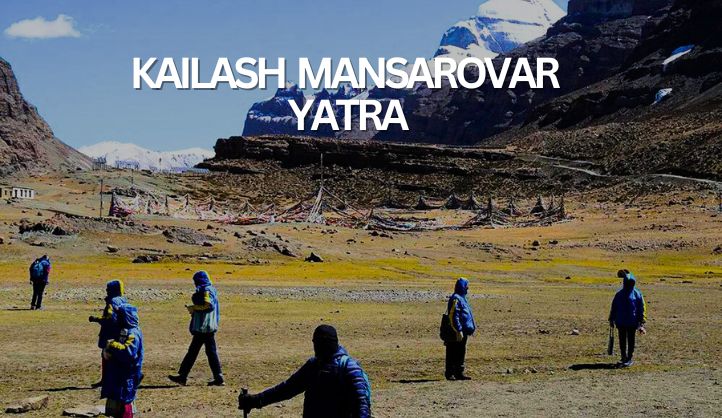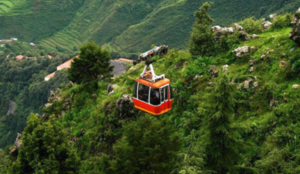The Kailash Mansarovar Yatra is one of the world’s most revered and challenging pilgrimages. Nestled in the serene and majestic Himalayas, this sacred journey takes devotees to the holy Mount Kailash and the pristine Lake Mansarovar. Situated in the remote region of Uttarakhand, India, it is a spiritual odyssey that tests the physical and mental endurance of the pilgrims, rewarding them with profound spiritual experiences and breathtaking natural beauty.
The Spiritual Significance
Mount Kailash, 6,638 meters (21,778 feet), is considered the abode of Lord Shiva and Goddess Parvati in Hinduism. Buddhists, Jains Kailash Mansarovar Yatra, and Bonpos also revere it. The journey to this sacred mountain is not merely a trek but a pilgrimage that embodies the quest for enlightenment and divine blessings.
Lake Mansarovar, located at the base of Mount Kailash at an altitude of 4,590 meters (15,060 feet), is one of the highest freshwater lakes in the world. Its crystal-clear waters are believed to purify the soul and absolve all sins, making it a significant site for ritual bathing and spiritual rejuvenation.
Map of Kailash Mansarovar Yatra
How to Reach
By Air
The nearest airport to Almora and Pithoragarh is Pantnagar Airport (PGH), approximately 125 km from Almora and 240 km from Pithoragarh.
By Rail
The nearest railway station to Almora is Kathgodam (about 90 km away), and to Pithoragarh is Tanakpur (about 150 km away). From these stations, you can take a taxi or bus to reach your destination.
By Road
Both Almora and Pithoragarh are well-connected by road. Buses and taxis are available from major cities like Delhi, Dehradun, and Haldwani.
The Yatra – An Overview
The Kailash Mansarovar Yatra from Uttarakhand is a meticulously planned expedition that involves trekking through challenging terrains and high altitudes. The journey typically spans 24 to 30 days and includes various stages, from preparation and acclimatization to the actual trek and return.
Route and Key Highlights
1. Preparation and Acclimatization
Starting Point: The Yatra usually begins from the town of Dharchula in Uttarakhand.
Health Check-ups: Pilgrims undergo medical check-ups to ensure they are fit for the high-altitude trek.
Acclimatization Camps: Spend a few days at acclimatization camps to get used to the altitude and prevent altitude sickness.
2. Dharchula to Lipulekh Pass
Key Stops: Tawaghat, Gala, Bundi, Gunji, and Kalapani.
Lipulekh Pass: The Lipulekh Pass at 5,334 meters (17,500 feet) serves as the gateway to Tibet (China) and the beginning of the trek to Mount Kailash and Lake Mansarovar.
3. Parikrama of Mount Kailash
Kora: The circumambulation of Mount Kailash, known as the Kora, is a 52-kilometer trek that typically takes three days.
Dolma La Pass: The highest point of the Kora at 5,636 meters (18,525 feet).
Significant Sites: Dirapuk Monastery and Zutulpuk Monastery.
4. Parikrama of Lake Mansarovar
Mansarovar Parikrama: A circumambulation of approximately 90 kilometers around the lake.
Ritual Bathing: Pilgrims take a holy dip in the lake, believed to cleanse their souls.
Best Time to Visit
The best time to undertake the Kailash Mansarovar Yatra in Uttarakhand is from May to September. During these months, the weather is relatively stable, and the paths are more accessible. The temperatures are milder, and there is less chance of encountering snow and extreme weather conditions, making the journey safer and more comfortable for pilgrims. Additionally, this period allows for better visibility of the stunning landscapes and smoother travel through the high-altitude regions.
Challenges and Considerations
Physical and Mental Preparedness
Fitness: It demands a high level of physical fitness due to the rugged terrain and high altitudes.
Mental Resilience: Pilgrims need mental strength to endure the hardships of the journey.
Permits and Documentation
Permits: Obtaining the necessary permits from Indian and Chinese authorities is crucial. This includes Inner Line Permits and special permits for Tibet.
Documentation: Carrying essential documents like passports, visas, and medical certificates is mandatory.
Health and Safety
Altitude Sickness: Proper acclimatization and medical care are essential to prevent altitude sickness.
Guides and Support: Hiring experienced guides and support staff ensures a safer and more organized journey.
Natural Beauty and Cultural Richness
The journey to Kailash Mansarovar Yatra is not just a spiritual quest but also an opportunity to witness the pristine beauty of the Himalayas. The region is home to diverse flora and fauna, with stunning landscapes of snow-capped peaks, verdant valleys, and serene lakes.
Additionally, it provides a glimpse into the rich cultural heritage of the local communities. Interactions with the people of Uttarakhand and Tibet offer insights into their traditions, customs, and way of life.
Nearby Places to Visit During the Kailash Mansarovar Yatra
Almora
A picturesque hill station known for its panoramic views of the Himalayas and rich cultural heritage. Almora is also famous for its ancient temples like Nanda Devi and Kasar Devi, making it a great place for spiritual seekers.
Pithoragarh
Often referred to as “Little Kashmir,” Pithoragarh is a town of immense natural beauty. It offers attractions like the Pithoragarh Fort, Kapileshwar Mahadev Temple, and the scenic Saur Valley.
Dharchula
A serene border town on the banks of the Kali River, Dharchula serves as a gateway to the higher Himalayan regions. It is a peaceful spot to rest and prepare for the challenging journey ahead.
Narayan Ashram
Located en route to the Lipulekh Pass, Narayan Ashram is a tranquil retreat that provides spiritual solace and basic accommodation to travelers. The ashram is set amidst beautiful surroundings, perfect for meditation and relaxation.
Gunji
A small village where pilgrims acclimatize before ascending to higher altitudes. Gunji offers a glimpse into the local culture and the hospitality of the Himalayan people.
Kausani
Famed for its panoramic views of the Nanda Devi, Trishul, and Panchachuli peaks, Kausani is a quaint hill station offering tranquility and scenic beauty. It is also known for the Anasakti Ashram, where Mahatma Gandhi stayed.
Munsiyari
A beautiful village that offers majestic views of the Panchachuli peaks. Munsiyari is a great place for trekking, bird-watching, and experiencing the natural beauty of the Himalayas.
Conclusion
Embarking on the Kailash Mansarovar Yatra from Uttarakhand is a transformative experience that transcends physical challenges and reaches the realm of spiritual awakening. The journey is a testament to human resilience, devotion, and the eternal quest for the divine. For those who undertake this pilgrimage, the sacred sites of Mount Kailash and Lake Mansarovar leave an indelible mark on their souls, offering a sense of peace, fulfillment, and a deeper connection with the universe.
FAQs About Mansarovar Yatra in Uttarakhand
1. What is the Mansarovar Yatra?
The Kailash Mansarovar Yatra is a pilgrimage that takes devotees to the holy Lake Mansarovar and Mount Kailash, believed to be the abode of Lord Shiva. While the traditional route is through Tibet, the Uttarakhand route offers an alternative path filled with spiritual significance and natural beauty.
2. When is the best time to undertake the Mansarovar Yatra?
The ideal time for this is between May and September when the weather is relatively stable and the paths are accessible.
3. What permits are required for the Mansarovar Yatra?
Special permits are required to undertake this pilgrimage, especially for the stretch that crosses into the Tibetan Autonomous Region. Pilgrims need to apply well in advance through authorized channels.
4. What is the starting point of the Mansarovar Yatra in Uttarakhand?
The journey typically begins in Delhi, from where pilgrims proceed to Almora or Pithoragarh. These towns serve as the starting points for the trek towards Lake Mansarovar.
5. How physically demanding is the Mansarovar Yatra?
The Kailash Mansarovar Yatra is physically demanding and requires good health and stamina. Pilgrims must be prepared for trekking or mule rides in high altitudes and varying weather conditions. A medical check-up and proper acclimatization are essential.





